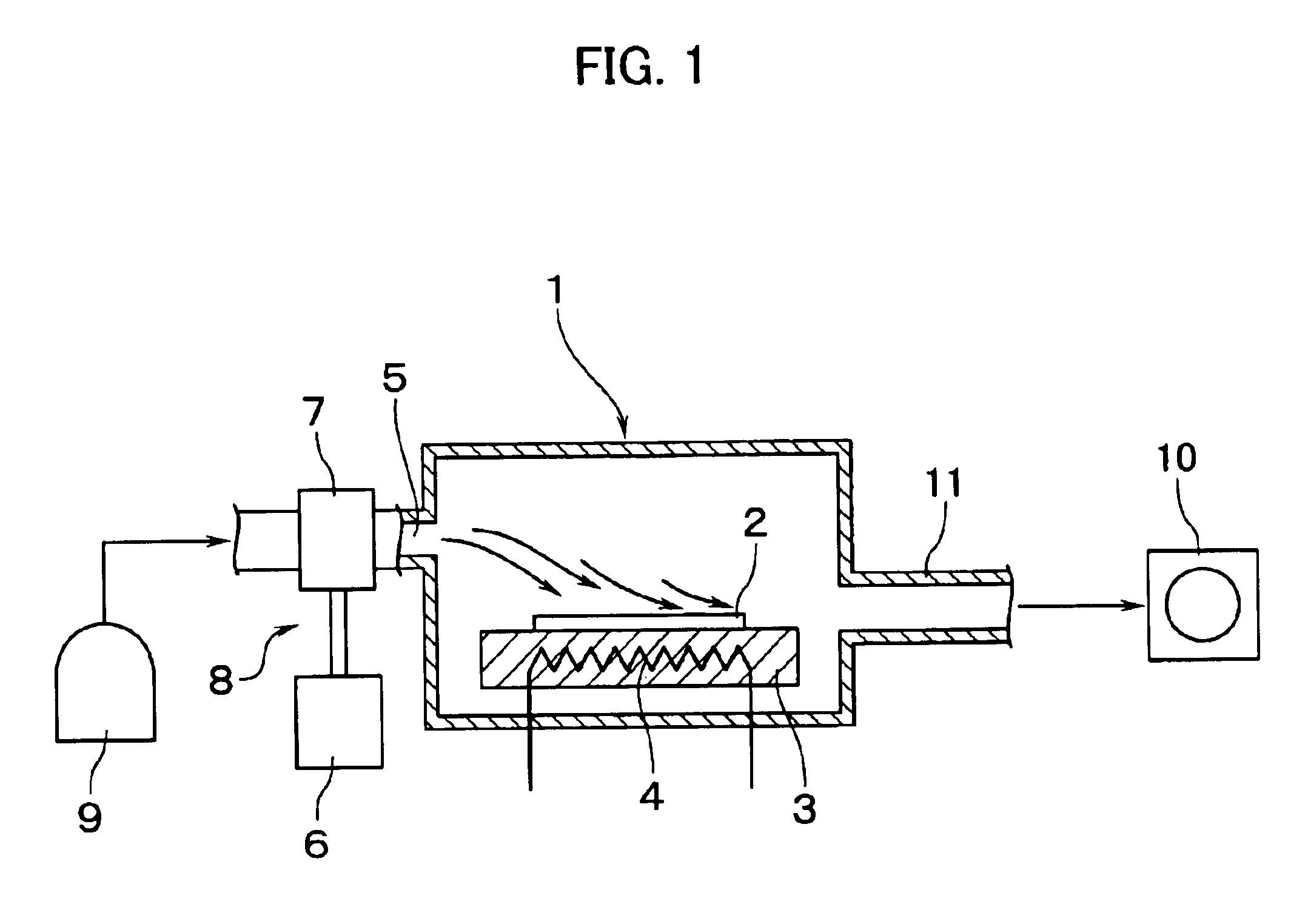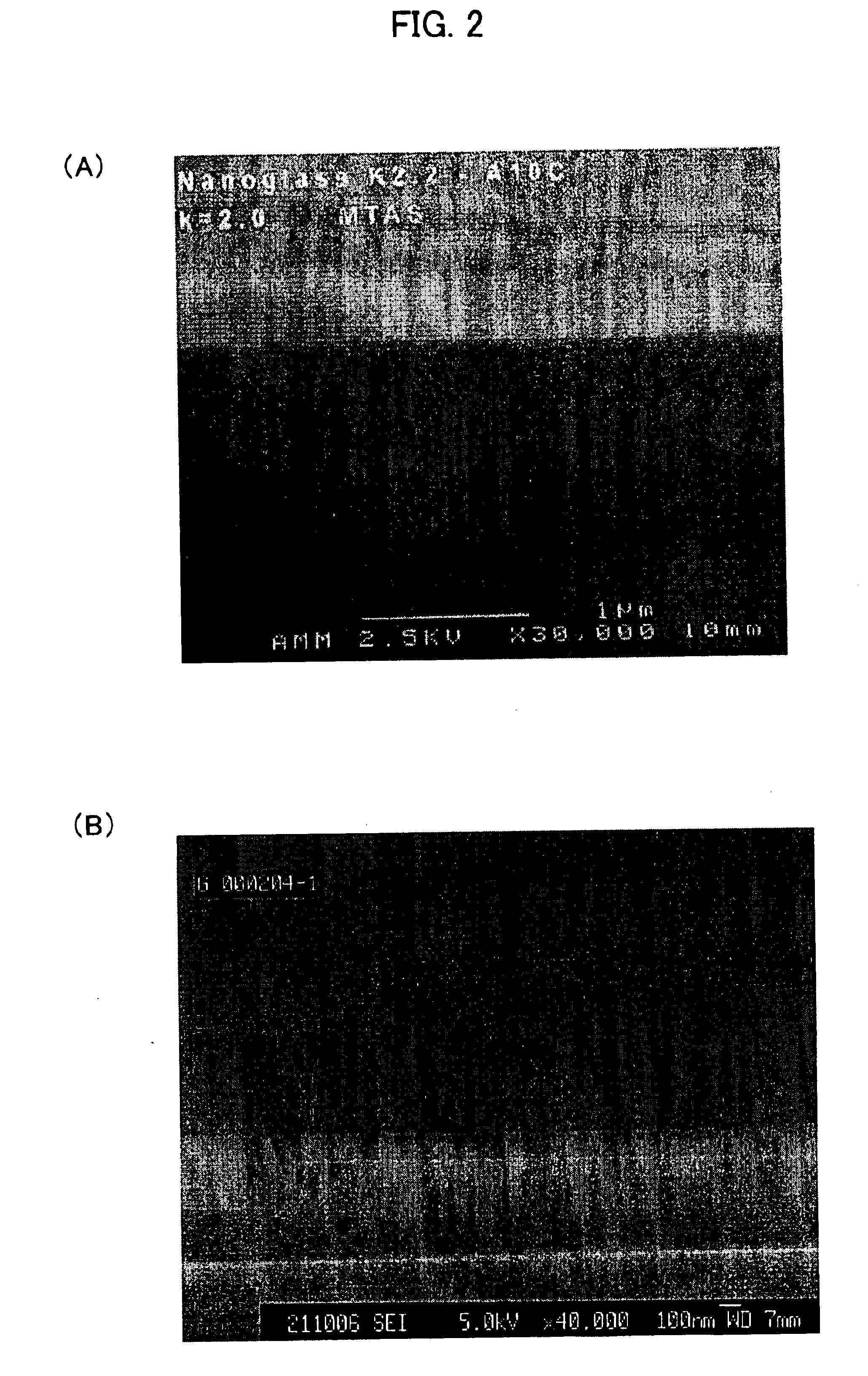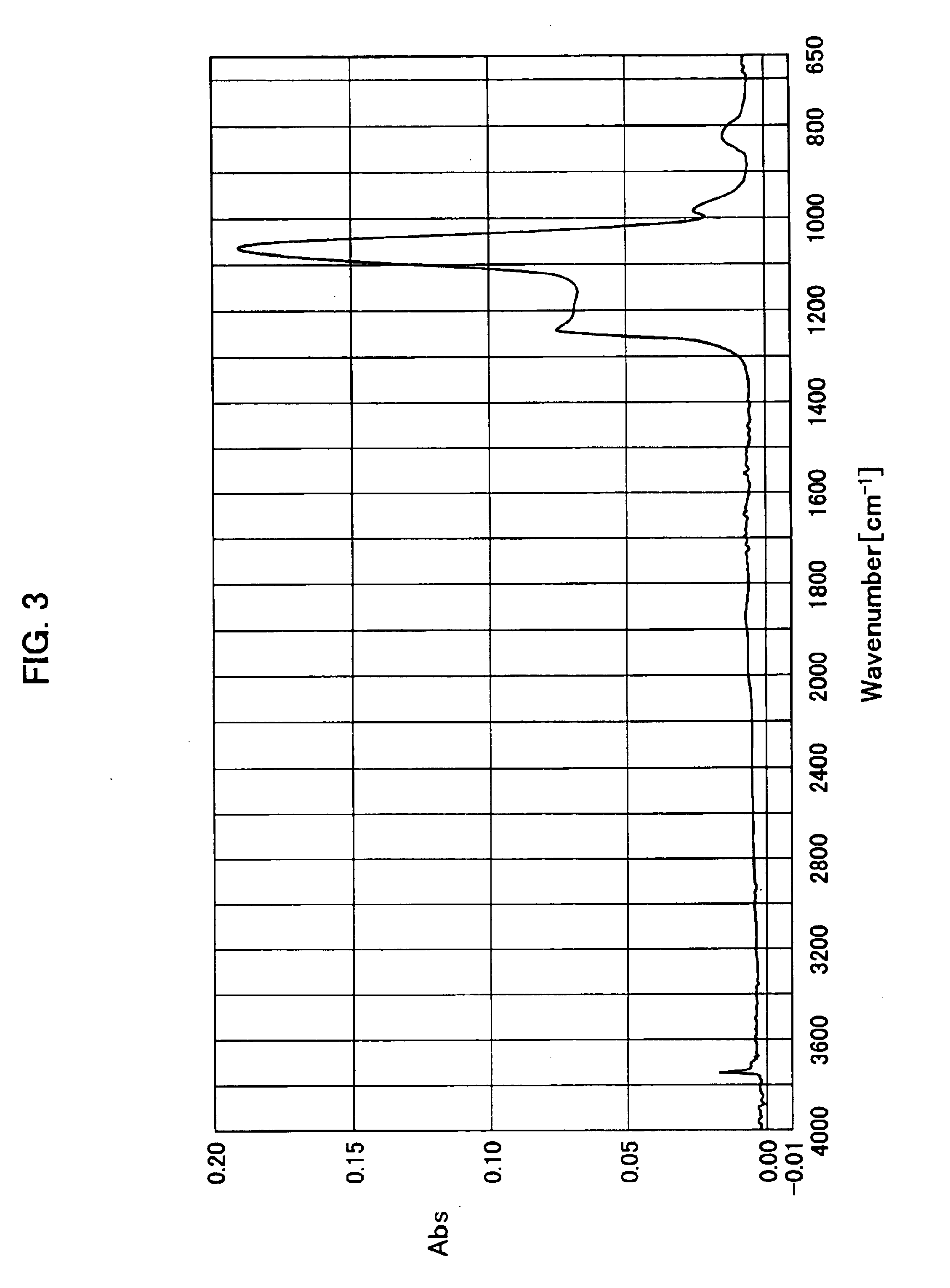Method for preparing porous SOG film
a technology of porous sog and film, which is applied in the direction of chemical vapor deposition coating, plasma technique, coating, etc., can solve the problems of increasing the diameter of the holes present in the resulting porous film the relative dielectric constant of the resulting product is too large to reduce the relative dielectric constant, and the hygroscopicity of the resulting porous film is reduced. , the effect of reducing the hygroscopicity
- Summary
- Abstract
- Description
- Claims
- Application Information
AI Technical Summary
Benefits of technology
Problems solved by technology
Method used
Image
Examples
example 1
The First Invention
[0060]A SiO2 solution for forming a porous SiO2 film (or a SOG porous film) was prepared using, as starting materials, 0.7 mole of nitric acid, 12 moles of water, 15 moles of ethanol and a predetermined amount of a surfactant per one mole of TEOS. The surfactant used herein was n-hexadecyl trimethyl ammonium chloride (available from Kanto Chemical Co., Ltd. under the trade name of CTAC1) and this was used in an amount of 0.1, 0.15, 0.2 or 0.25 mole per mole of TEOS to thus give each coating solution. Each coating solution was applied onto the surface of a semiconductor substrate (Sample Nos. A1 to H1) under the condition of 3000 rpm using a spin coater. Using a known infrared heating furnace, each substrate provided with the coated layer was first treated at temperatures ranging from 200 to 400° C. in the air and then fired at a temperature of 400° C. in an atmosphere of 100 to 10−5 Pa, as indicated in the following Table 1, to thus form each corresponding porous ...
example 2
The Second Invention
[0066]An insulating film (Sample Nos. A2 to H2) consisting of a bilayer porous film was prepared by forming a porous film (thickness: 0.5 μm) according to the film-forming steps used in Example 1 and then forming a porous SiO2 film (thickness: 0.5 μm) similar to the foregoing porous film on the surface of the foregoing porous film by repeating the film-forming steps.
[0067]Aluminum was vapor-deposited on the multilayered porous SiO2 films thus prepared to form electrodes. After one week, the relative dielectric constants thereof were determined using a relative dielectric constant-measuring equipment available from HP Company (RF IMPEDANCE ANALYZER 4191A). The results thus obtained are listed in the following Table 2.
[0068]
TABLE 2Initial Heat-Second Heat-DielectricSampleTreatmentTreatmentSurfactant / TEOSConst.No.(° C.)(° C.)(molar ratio)(ε / ε0)A22004000.1 2.9B22004000.152.5C22004000.2 1.9D22004000.251.5E22504000.251.8F23004000.252.3G23504000.252.8H24004000.253.4
[006...
example 3
The Second Invention
[0072]A SiO2 film, a SiNx film or a SiOxNy film (thickness: 50 nm) was formed on the surface of the porous SiO2 film (thickness: 0.5 μm) obtained in the first step of Example 2 by the CVD or sputtering method to thus cap the surface of the porous film. Then the foregoing first step and the capping layer-forming step were repeated under the same conditions to thus form, in order, a porous film and a capping layer on the first capping layer.
[0073]Aluminum electrodes were vapor-deposited on the multilayered porous films thus prepared and thereafter the relative dielectric constants thereof were determined using a relative dielectric constant-measuring equipment available from HP Company (RF IMPEDANCE ANALYZER 4191A). As a result, it was found that values similar to those listed in Table 2 were obtained. Accordingly, such a multilayered porous film may be used as useful interlayer insulating film.
PUM
| Property | Measurement | Unit |
|---|---|---|
| temperatures | aaaaa | aaaaa |
| temperatures | aaaaa | aaaaa |
| heat-resistant temperature | aaaaa | aaaaa |
Abstract
Description
Claims
Application Information
 Login to View More
Login to View More - R&D
- Intellectual Property
- Life Sciences
- Materials
- Tech Scout
- Unparalleled Data Quality
- Higher Quality Content
- 60% Fewer Hallucinations
Browse by: Latest US Patents, China's latest patents, Technical Efficacy Thesaurus, Application Domain, Technology Topic, Popular Technical Reports.
© 2025 PatSnap. All rights reserved.Legal|Privacy policy|Modern Slavery Act Transparency Statement|Sitemap|About US| Contact US: help@patsnap.com



